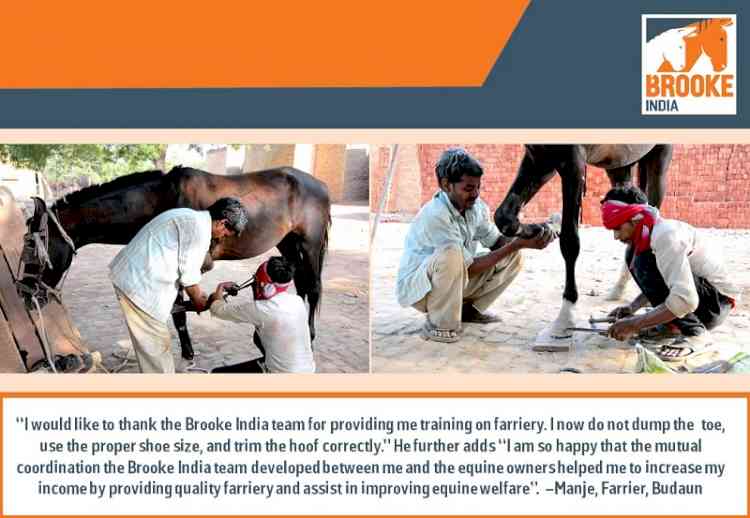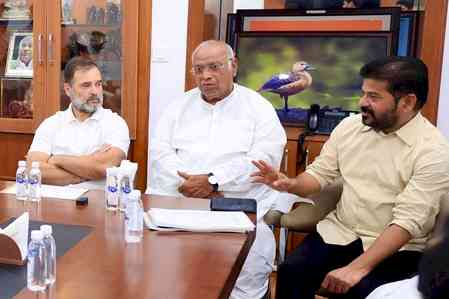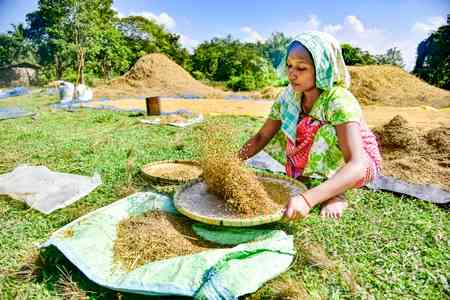Transforming Farriery Profession by imparting skill-based training to Local Street Farriers in India
In India, Farriery is a hereditary trade, which is passed down generations

Ghaziabad: In India, working equids suffer a lot due to poor Farriery skills of the Local Street Farriers (LSF). As a result, majority of the working equids have various hoof related problems such as lameness, poor conformation, hoof imbalance, bad hoof shape, incorrect hoof angle, frog cutting & poor hoof quality.
The hoof is the most susceptible part of the equine anatomy that requires proper care. Equids employed in Brik Kilns (BKs) usually operate in difficult terrains & carry the awkward loads on unlevelled roads. For example, in a typical BK, equids (horses, mules & donkeys) work in 8-10 hour shifts, making 12-20 pack trips or 6-10 cart trips carrying raw bricks from the moulding and sun-drying area to the kiln. The average weight of raw brick is between 2-2.5 kgs. A horse/mule carries between 300-500 raw bricks per load depending upon its own weight & size, when transportation is by cart. On the other hand, when transportation is by pack, equids, depending upon their own weight & size, carry 40-50 raw bricks per pack.
Working in such a harsh environment usually results in chronic lameness leading to reduced efficiency & abuse by equine owners to extract maximum work.
BI carried a baseline study of 1192 equids using Standardised Equine Based Welfare Assessment Tool (SEBWAT) in financial year 18-19 in Uttar Pradesh, Uttarakhand, Punjab, Haryana & Maharashtra. The survey found that more than 61% of equids had poor hoof shape & more than 39% had poor hoof quality. The main reason behind these hoof related issues was the lack of good quality LSFs in BI operational areas.
In 2017-18, BI conducted a baseline study under its Farriery Mentoring Framework assessing 105 equids shod by LSFs in Uttar Pradesh. The study once again revealed that 69% of working equids had poorly trimmed hooves with improper hoof balance, disturbed hoof angle, dumping & 65% of the equids were fitted with shorter or longer iron shoes. Other factors which have resulted in poor hoof care is the lack of knowledge among equine owners regarding trimming & shoeing. Besides, the LSFs are also unwilling to use quality shoes & nails due to the high cost & lack of demand from the equine owners.
In India, Farriery is a hereditary trade, which is passed down generations, & there is a lack of formalised structured training programmes. The only formal Farriery training available in the country is in Indian Army/para-military forces, which are not accessible to the LSFs. As a result, LSFs adopt faulty practices & demonstrate poor farriery skills, thus resulting in hoof related issues in the working equids.
Ensuring good quality Farriery services for working equids remains a big welfare challenge for BI. In 2019-20, BI decided to adopt a holistic programmatic approach under its Global Farriery Project (GFP). The objective of GFP is to raise the profile of Farriery as a trade, encourage the development of professional standards, which would lead to improve hoof health of the working animals & support sustainable livelihoods of the marginalised families.
Under GFP, BI has already invested resources to train its Master Farriery Trainers (MFT) through a qualified UK Farriery consultant. These trained MFT mentor & provide on-site skill training support to the LSFs. The main emphasis of this approach is to enhance their knowledge of hoof anatomy, hoof balance, correct shoeing practices. Similarly, to improve resource availability, BI MFTs are also mentoring shoemakers for producing good quality shoes. For demand generation at the community level, BI Vets & Field Assistants (FAs) are already engaging with equine owners to highlight the importance of hoof care & motivating them to demand quality, Farriery services from LSFs.
Besides supporting the GFP project, BI also plans to tackle the Farriery skill & resource gap issue in the Farriery profession by collaborating with Veterinary Universities/Research Institutes to impart certified Farriery training.
BI believes that all these efforts will result in a reduction of hoof-related problems & incidence of lameness cases among the working equids in our operational areas. The professionalization of the Farriery trade through regulation, certification and skill enhancement will encourage the adoption of this trade in rural India, thus transforming Farriery profession in the country. /(Sharat K Verma,Ludhiana)


 cityairnews
cityairnews 











